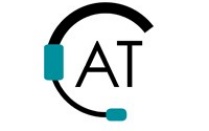Full citation
Eastwood, C., et al. (2017). "Dynamics and distribution of public and private research and extension roles for technological innovation and diffusion: Case studies of the implementation and adaptation of precision farming technologies." Journal of Rural Studies 49: 1-12. OI: https://doi-org.gate.lib.buffalo.edu/10.1016/j.jrurstud.2016.11.008
Format: Peer-reviewed article
Type: Research — Case studies
Experience level of reader: Fundamental
Annotation: Innovations must be adopted in order to be truly successful. In the case of precision dairy farming, adaptation has been lower than expected. The challenge is for public and private entities to collaborate throughout the phases of initiation, implementation, and adaptation. This paper examined the roles of participants and their success with knowledge transfer.
This article uses the Commercial Devices and Services version of the NtK Model
Primary findings
Barriers
- Adopting new technologies is presumed to be a logical decision; however individual users determine for themselves the costs and benefits of investing in new tech, including their own natural resistance to change. If the return on investment doesn’t support the change, not adopting new tech is the rational choice for the user.
Case study findings
Occurrences within the model: NTK Steps 1.2, 1.3, 2.2, 7.10, 7.13; NtK Tip 4.1; KTA 3.F - Private companies seldom disclose their development practices to protect intellectual property.
Case study findings
Occurrences within the model: NTK Steps 3.9, 4.1, 4.4, 4.6 - Complications in use and unintended impacts on the user impede adaptation and use of new technologies.
Case study findings
Occurrences within the model: NTK Step 5.2, Stage 6, Stage 7 - (2) Developed knowledge and processes around a current practice can create a form of lock-in where new innovation has to provide advantage above a threshold before sustained change occurs.
Case study findings
Occurrences within the model: NTK Steps 1.1, 2.2, 4.3, 4.13, 7.10
Carriers
- New technology adoption is affected by different variables: education, asset possession, risk taking attitude, and aptitude for new technology (absorptive capacity).
Case study findings
Occurrences within the model: NTK Steps 2.2, 4.11, 5.2, 6.3 - Successful adaptation is linked to availability of user support such as training, customer service, and local repair techs.
Case study findings
Occurrences within the model: NTK step 4.11, 7.10, 8.2, 9.1 - (1) Public agencies are well positioned to organize roles to facilitate integrated design. Groups can delineate activities along the lines of “front office” and “back office”.
Case study findings
Occurrences within the model: NTK Steps 1.5, 3.1, 3[JLF2] .2 - (2) The relative advantage a technology provides over incumbent practice or technology impacts adoption and risk in terms of return on investment or the cost of failure.
Case study findings
Occurrences within the model: NTK Steps 2.2, 4.3, 4.13, 7.10
Method
- Evaluating technological innovation systems for their ability to support development and diffusion will identify factors that can hinder adaptation and market success.
Case study findings
Occurrences within model: NTK Steps 2.2, 4.1, 4.3, 4.13, 7.11 - (1) Complex technologies require a collaborative approach for successful innovation and diffusion. Minimizing the level of innovation system uncertainty should be a focus of collaboration to identify needs, demonstrate the value of technologies, and work together to design and deliver post-purchase support.
Case study findings
Occurrences within model: NTK Steps 1.5, 3.1, 4.1, 4.6, 7.11, 8.2, 9.1
Model
(2) Technological innovation systems (TIS) incorporate the actors and rules influencing the speed and direction of change in a specific technological area. The TIS approach emphasizes the interplay of all relevant actors.
Case study findings
Occurrences within model: NTK Steps 1.5, 2.2, 3.1, 4.1, 4.6
